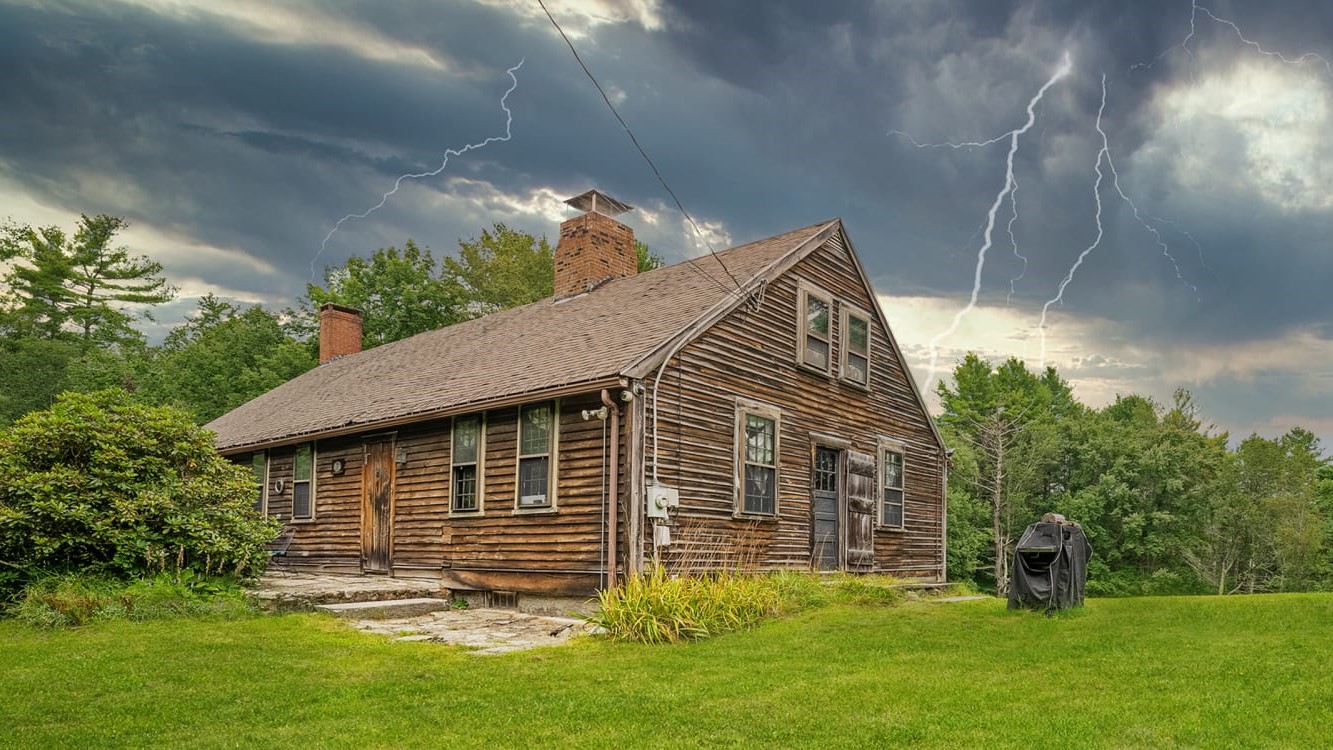Nestled in the quiet town of Harrisville, Rhode Island, stands an unassuming farmhouse that has become one of the most infamous haunted locations in the world. Known as “The Conjuring House,” this property has captivated the imagination of paranormal enthusiasts and horror fans alike, thanks to its terrifying history and the popular horror movie franchise it inspired. But what is it about this house that has led to its legendary status? Let’s delve into the history, the hauntings, and the cultural impact of The Conjuring House.
A History Steeped in Darkness
The Conjuring House, officially known as the Old Arnold Estate, was built in 1736 and has a history as rich as it is dark. The 14-room farmhouse was originally home to the Arnold family, who lived on the property for eight generations. However, the land’s history extends even further back, with reports of Native American massacres and conflicts that left a mark on the area.
The house’s most notorious resident was Bathsheba Sherman, who lived in the home in the 19th century. According to local legend, Bathsheba was a practicing witch who sacrificed her own child to the devil. Though these claims were never proven, they have been passed down through generations, contributing to the house’s eerie reputation. Bathsheba is often cited as the malevolent spirit that haunts the property, tormenting its inhabitants and leaving a trail of fear in her wake.
The Perron Family Haunting
The haunting of The Conjuring House gained widespread attention in the 1970s when the Perron family moved into the farmhouse. Carolyn and Roger Perron, along with their five daughters, quickly realized that their new home was anything but ordinary. The family reported a series of increasingly disturbing paranormal events, including disembodied voices, objects moving on their own, and the appearance of ghostly figures. The children experienced terrifying encounters, with one daughter claiming to have been physically attacked by a spirit.
As the hauntings escalated, Carolyn Perron began researching the history of the house and discovered the story of Bathsheba Sherman. Convinced that Bathsheba was the malevolent force terrorizing her family, Carolyn sought help from renowned paranormal investigators Ed and Lorraine Warren.
The Warren Investigation
Ed and Lorraine Warren were famous for their investigations into the paranormal, and The Conjuring House became one of their most famous cases. The Warrens believed that the house was a hub of supernatural activity, with Bathsheba Sherman as the primary antagonist. Lorraine Warren, a clairvoyant, claimed to have seen Bathsheba’s spirit during a séance held at the house. The séance was reportedly so intense that it caused Carolyn Perron to become temporarily possessed, further solidifying the Warrens’ belief in the dark forces at play.
Despite the Warrens’ efforts to cleanse the house, the Perron family continued to experience paranormal activity until they eventually moved out in 1980. The haunting left a lasting impact on the family, and their experiences would later serve as the inspiration for the 2013 film The Conjuring.
The Cultural Impact
The story of The Conjuring House entered the mainstream with the release of The Conjuring, directed by James Wan. The film, which portrays the Perron family’s ordeal and the Warrens’ investigation, was a box office success and sparked a renewed interest in the paranormal. It also spawned a highly successful franchise that includes sequels, spin-offs, and a devoted fanbase.
The popularity of the film has led to increased attention on the actual house in Harrisville. Paranormal investigators, ghost hunters, and curious tourists have all flocked to the property, hoping to catch a glimpse of the supernatural. The current owners of the house have embraced its haunted reputation, offering tours and even overnight stays for those brave enough to experience the house’s eerie atmosphere firsthand.
Fact or Fiction?
While the story of The Conjuring House is undeniably captivating, it raises questions about the line between fact and fiction. The Perron family and the Warrens firmly believe in the hauntings, but skeptics argue that the events could be explained by psychological factors, coincidences, or the power of suggestion. The lack of concrete evidence leaves the true nature of the haunting open to interpretation, allowing the legend to grow and evolve over time.
Conclusion
The Conjuring House remains one of the most iconic haunted locations in the world, with a history that is as intriguing as it is terrifying. Whether one believes in the paranormal or not, there is no denying the impact that this farmhouse has had on popular culture. The combination of historical tragedy, compelling personal accounts, and Hollywood storytelling has cemented The Conjuring House as a cornerstone of modern horror, ensuring that its legacy will endure for generations to come.
